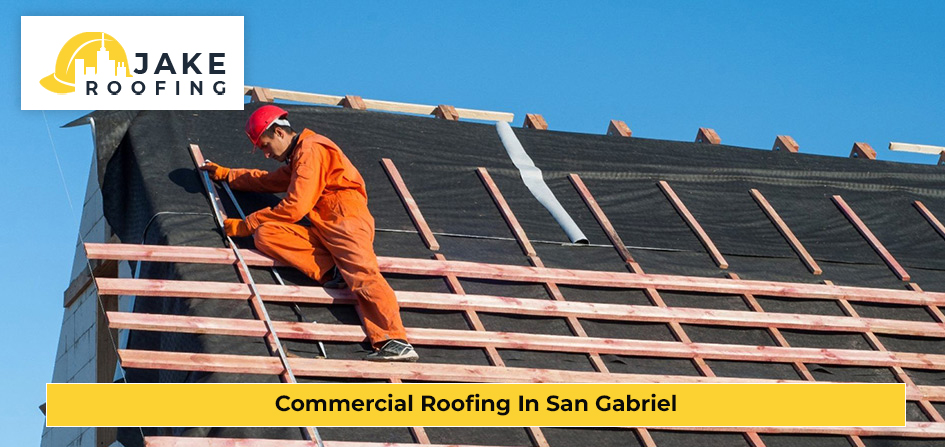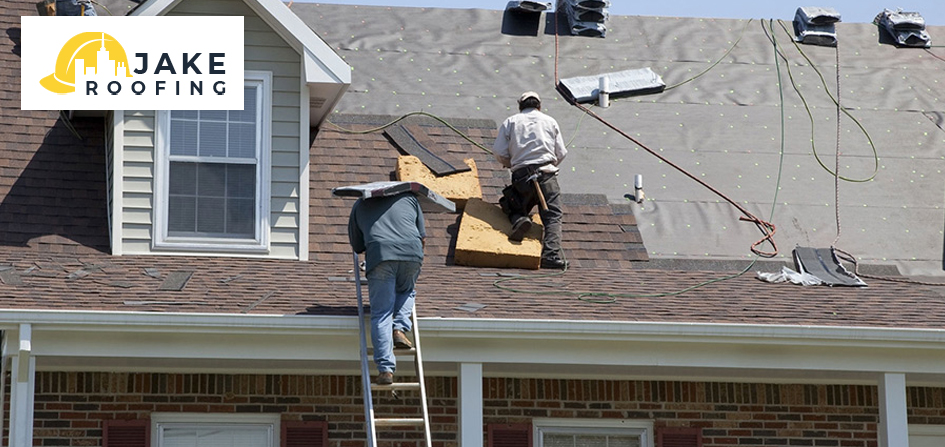The Different Stages of the Life of Your Commercial Roof
You will get a range of services for commercial roofing in San Gabriel. Different services will be required at different stages over the life of your commercial roof. Here are the different stages and the services you might need at each of them.
New Installation
When a commercial roof is newly installed, you need assistance with roof design, material selection, proper installation, and ensuring compliance with building codes and regulations.
Early Life (0-10 years)
During this stage, regular inspections, maintenance, and minor repairs are necessary. Services may include roof inspections, gutter cleaning, sealing of minor leaks, and addressing any visible damage or issues.

Mid-Life (10-20 years)
As the roof ages, more significant repairs and maintenance are needed. This may require replacing damaged or worn-out components, repairing leaks, addressing membrane deterioration, and conducting more thorough inspections.
Late Life (20+ years)
At this stage, the roof is nearing the end of its lifespan. You might need extensive repairs, address widespread leaks or deterioration, consider roof restoration options, and evaluate the need for a complete roof replacement.
End of Life
When a commercial roof reaches the end of its life, a full roof replacement might become necessary. You might need services for roof removal, replacement with a new roofing system, and ensuring proper installation to meet current standards.

The Different Materials for Commercial Roofing
It is important that you choose the right material for commercial roofing in San Gabriel. Here are some of the most commonly used materials used in commercial roofing projects.
| Roofing Material | Advantages | Options Available |
|---|---|---|
| TPO (Thermoplastic Polyolefin) | Energy-efficient, durable, and cost-effective |
|
| EPDM (Ethylene Propylene Diene Terpolymer) | Excellent weather resistance and durability |
|
| PVC (Polyvinyl Chloride) | Highly durable and resistant to chemicals and UV rays |
|
| Modified Bitumen | Superior durability and flexibility. |
|
| Metal | Long-lasting, fire-resistant, and low-maintenance. |
|
| Built-Up Roofing (BUR) | High durability and waterproofing properties |
|
What are the Different Components of a Commercial Roof?
Commercial roofs typically have several unique components that are designed to ensure proper functionality and protection. Here are some common components of a commercial roof
Roof Deck
The base layer of the roof that provides structural support and serves as a foundation for the roof system.
Membrane
The waterproof layer that covers the roof. It can be made of materials such as TPO, EPDM, PVC, or modified bitumen.
Flashing
Metal strips or sheets used to seal joints and transitions in the roof, preventing water penetration.
Roof Drains
Designed to facilitate the drainage of water from the roof and prevent pooling or water damage.
Roof Vents
Provide ventilation to control temperature, moisture, and humidity within the building.
Skylights
Windows or transparent panels installed on the roof to allow natural light into the building.
HVAC Units
Heating, ventilation, and air conditioning systems are installed on the roof to regulate indoor climate.
Roof Access Points
Ladders, stairs, or hatches that provide safe access to the roof for maintenance or inspections.
Safety Equipment
Including guardrails, walkways, and anchor points to ensure the safety of workers performing maintenance or repairs.
Commercial Roofing in San Gabriel – Rules and Regulations
Building Codes
Commercial roofs must adhere to the California Building Code (CBC) and local building codes enforced by the City of San Gabriel. These codes outline the minimum requirements for construction, structural integrity, fire safety, and other aspects related to commercial roofing.
Energy Efficiency Standards
California has stringent energy efficiency standards for commercial buildings, including requirements for roofing materials and insulation. The Title 24 Energy Efficiency Standards mandate specific performance criteria that commercial roofs must meet to minimize energy consumption and reduce environmental impact.
Environmental Regulations
Commercial roofs in San Gabriel must comply with environmental regulations such as stormwater management and pollution prevention. The city may have specific guidelines for controlling runoff, handling hazardous materials, and implementing sustainable roofing practices.
Permitting Requirements
Any modifications, repairs, or replacements to commercial roofs usually require building permits. The City of San Gabriel’s Building and Safety Division oversees the permitting process to ensure compliance with building codes and regulations. Schedule a consultation with Jake Roofing to know all about permits.
Local HOA or Covenants
In some cases, commercial properties may be subject to additional regulations imposed by local homeowners’ associations (HOAs) or property covenants. These may include aesthetic guidelines or restrictions on roof materials, colors, or designs.

Frequently Asked Questions
Yes, you would get a detailed written estimate for the project. The written estimate typically includes a breakdown of the costs, including labor, materials, equipment, permits, and any additional expenses associated with the roofing project. It should outline the scope of work, timelines, and any specific terms and conditions.
Every project will have a dedicated project manager. The project manager will serve as the main liaison between you and the roofing company, keeping you informed about the progress, addressing any concerns or questions you may have, and coordinating the various aspects of the project. Having a dedicated point of contact ensures effective communication, streamlines the decision-making process, and helps to maintain a smooth workflow.
Different roofing materials may come with varying warranty terms and coverage. It is important to understand the specific warranty details, including the duration of coverage, what aspects of the roof are covered, and any limitations or exclusions that may apply.
